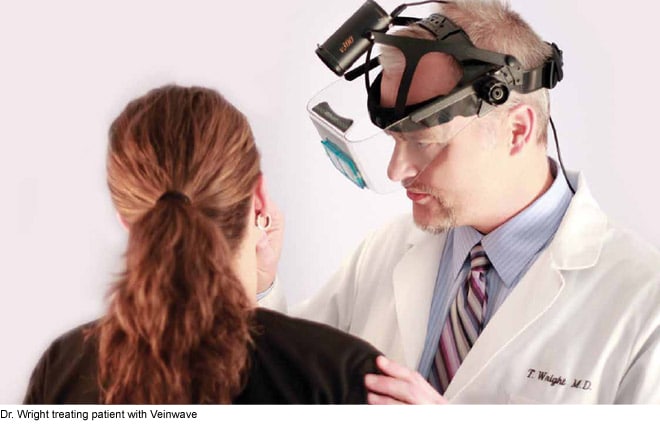
Individuals suffering from underlying venous insufficiencies will often see the condition present in a variety of ways across the body. From varicose veins to spider veins, patients who struggle to maintain property blood flow throughout the body regularly deal with the development of vein webbings across the face, arms, and legs or more severe varicose veins that bulge and twist and may be accompanied by symptoms such as pain and swelling. No matter what level of severity an individual experiences varicose or spider veins, their development can lead to a desire to seek laser treatment for spider veins to reduce or eliminate their appearance entirely.
Treating Veins in the Past
Historically, the development of more severe varicose veins was treated exclusively with a painful and invasive procedure known as vein stripping. Patients who elected to undergo vein stripping were required to participate in a rather lengthy hospital stay that includes a procedure that incorporated general anesthesia. During vein stripping, a physician would create a large incision along the leg in order to be able to remove the problematic varicose veins from underneath the skin. While the results could potentially be successful, the recovery period for vein stripping was lengthy and was frequently accompanied by painful scarring or nerve damage in the area of treatment. This was in addition to the risks a patient faced pertaining to the use of anesthesia and the potential for infection that is associated with any hospital stay.
Modern Approaches to Treating Veins
Patients today who are looking to reduce or eliminate the appearance and symptoms associated with both varicose veins and spider veins have a long list of options to choose from. The advancements in the fields of laser and cosmetic technologies have opened up doors to treatment options that are not only minimally invasive but include virtually painless approaches and come with the added benefit of quick recovery times. The elimination of the need for general anesthesia has made these treatment options significantly safer for patients and where small incisions have replaced large incisions, patients no longer have to worry about significant scarring. In fact, many patients now feel empowered to work alongside their physician in determining a plan of action that not only fits their procedure preferences, but takes into consideration their health history and lifestyle for a more customized approach to vein treatment.
Radiofrequency Venous Ablation
In the modern world of laser vein treatment options, many patients are drawn to those procedures that can take place in the comfort of the doctor’s office and are considered outpatient treatments. One of the most popular treatment options for those patients looking to reduce or eliminate painful varicose veins is radiofrequency venous ablation. This minimally invasive treatment option involves nothing more than local anesthetic and a small incision point in the treatment area for the cosmetic physician to insert a small fiber that can target the problematic veins using radiofrequency energy. The energy stresses the vein to the point of closure and collapse and over time, the vein will naturally be reabsorbed into the body. Radiofrequency venous ablation generally takes no more than 45 minutes to an hour and involves a very quick recovery time. This treatment option has proven to be highly effective and at most is accompanied by redness or swelling at the treatment site which is generally reduced with over-the-counter pain medication as needed.
Endovenous Laser Ablation
Extremely similar to radiofrequency venous ablation, endovenous laser ablation is another popular choice amongst patients looking to treat varicose veins with a minimally invasive method. This outpatient procedure also takes place in an attending physician’s office over the course of an hour and requires an injection of a local anesthetic to ensure a comfortable treatment session. Once the area is sufficiently numb, a small incision is made so the attending physician can insert a small fiber to target the varicose veins using precision laser energy. The energy will similarly close and collapse the veins, allowing the body to reabsorb it and sending blood flowing towards a healthier vessel.
Laser Treatment for Spider Veins
Far less painful than varicose veins, spider veins are often treated under cosmetic circumstances. To reduce or eliminate spider veins across the body, cosmetic physicians frequently recommend sclerotherapy as a laser treatment for spider veins. This approach is an outpatient treatment option that allows a physician to inject a solution of anesthetic and sclerosant into the spider veins. The combination of chemicals irritates the veins to the point of collapse, ultimately reducing their appearance as they’re absorbed back into the body. Combining this technique with ultrasound-guidance is a good way for physicians to target spider veins that may be originating from deeper below the surface of the skin.
Contact The Laser Lipo and Vein Center Today
There’s no reason to wait when you’re considering the many benefits of laser vein treatments. Contact Dr. Wright and his team at the St. Louis Laser Vein Center today to learn more about what options may work best for you and to schedule your initial consultation.
